Koh Samui is the second largest island in Thailand and one of Southeast Asia’s most popular tourist destinations, known for its natural beauty and cultural richness. Surrounded by clear turquoise waters, the island offers beaches, tropical forests, impressive temples, and a peaceful atmosphere, providing visitors with a vacation full of both relaxation and exploration. The island particularly attracts beach lovers with its shores such as Chaweng and Lamai, while also offering spiritual and cultural depth through sites like Big Buddha, Wat Plai Laem, and other temples.
In addition, Koh Samui is not just about sea and sand. For nature lovers, waterfalls, secret gardens, and national parks await discovery, while adventure seekers can enjoy activities such as ziplining, diving, and boat tours. Fishing villages, night markets, and structures reflecting traditional Thai culture also reveal the island’s social and cultural aspects. Koh Samui is a versatile destination that appeals to both travelers seeking tranquility and those desiring an active holiday.
1. Big Buddha Temple (Wat Phra Yai) – One of the island’s landmarks, featuring a 12-meter-tall Buddha statue.

Big Buddha Temple (Wat Phra Yai) is one of the most recognized and iconic structures in Koh Samui. Built in 1972, this temple is located on a small islet called Koh Fan in the northeastern part of the island and is connected to the mainland by a causeway. The most striking feature of the temple is the 12-meter-tall golden seated Buddha statue. Visible from a distance, this giant statue represents Buddha on the path to enlightenment and serves as a place of worship for both tourists and locals.
The temple complex is captivating not only in religious terms but also culturally and visually. Visitors can climb the stairs to reach the statue and enjoy the sea view from there. Within the temple grounds, there are souvenir shops, small prayer areas, and stalls offering local food. Those who arrive in the morning can witness the monks’ morning rituals and closely observe traditional Thai religious practices. Wat Phra Yai is a must-see in Koh Samui, offering both spiritual and visual appeal.
2. Wat Plai Laem – A temple complex built on a pond, famous for its multi-armed Guanyin statue.
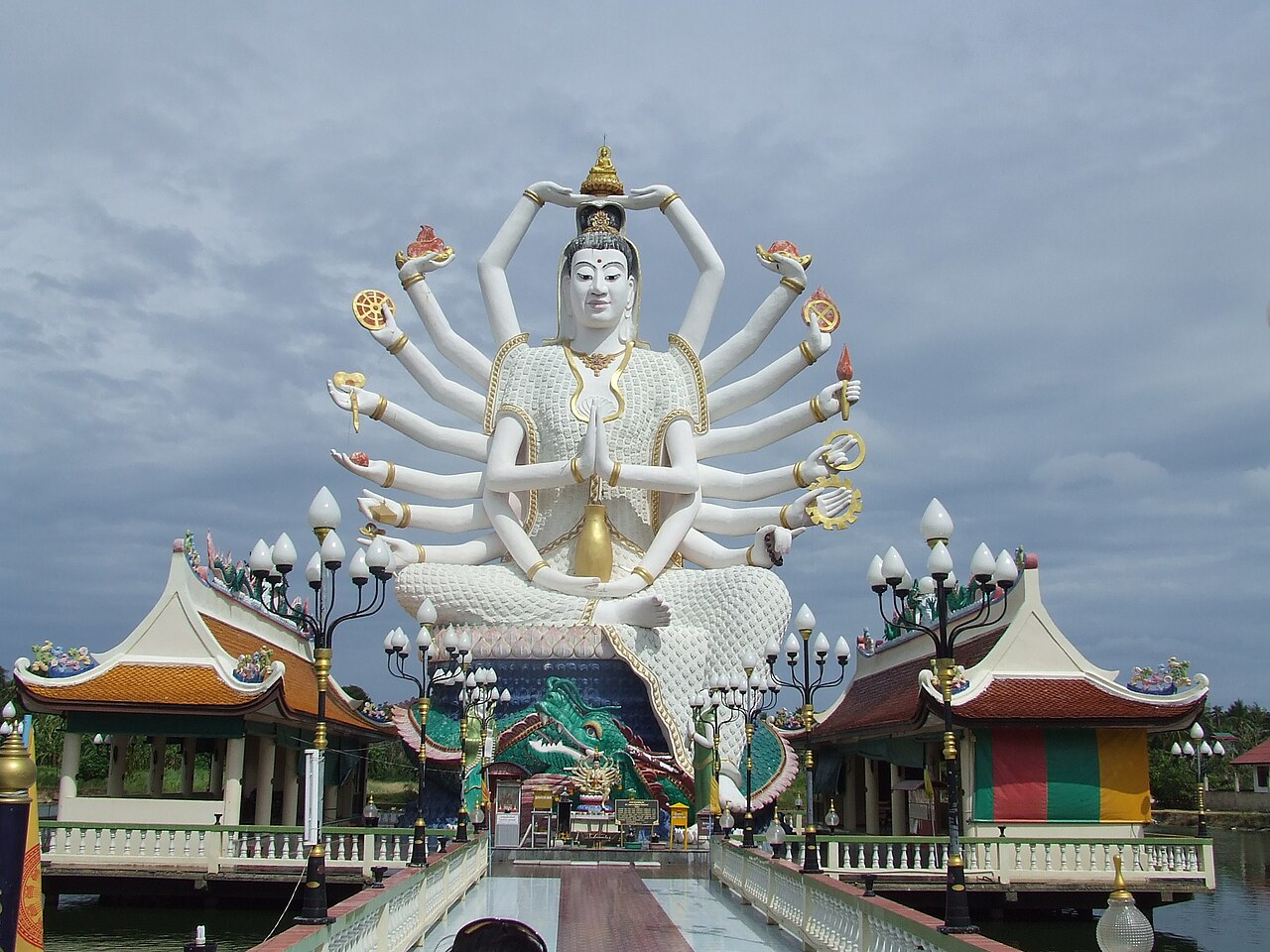
Wat Plai Laem is a fascinating temple complex located in northeastern Koh Samui, near the Big Buddha. Known for its colorful and modern appearance, Wat Plai Laem is especially famous for the multi-armed statue of Guanyin (the goddess of compassion) standing on a pond and the joyful white Maitreya Buddha statue. The temple’s platforms built over the water, small statues scattered across the pond, and expansive gardens provide visitors with a peaceful atmosphere. The temple attracts both photography enthusiasts among tourists and locals who come to worship.
Moreover, Wat Plai Laem is more than just a religious center—it is also a place of art that showcases the aesthetic and symbolic richness of Thai culture. Visitors can walk around the pond, observe lavender-colored fish while maneuvering small boats, or participate in local traditions by praying in the worship areas. The temple’s architecture and statues symbolize the core values of Thai belief, such as compassion, mercy, and joy. With its cheerful colors and serene setting, Wat Plai Laem is a must-visit for those seeking a spiritual experience during their trip to Koh Samui.
3. Hin Ta and Hin Yai Rocks – Uniquely shaped natural rock formations known as “Grandfather and Grandmother Rocks.”
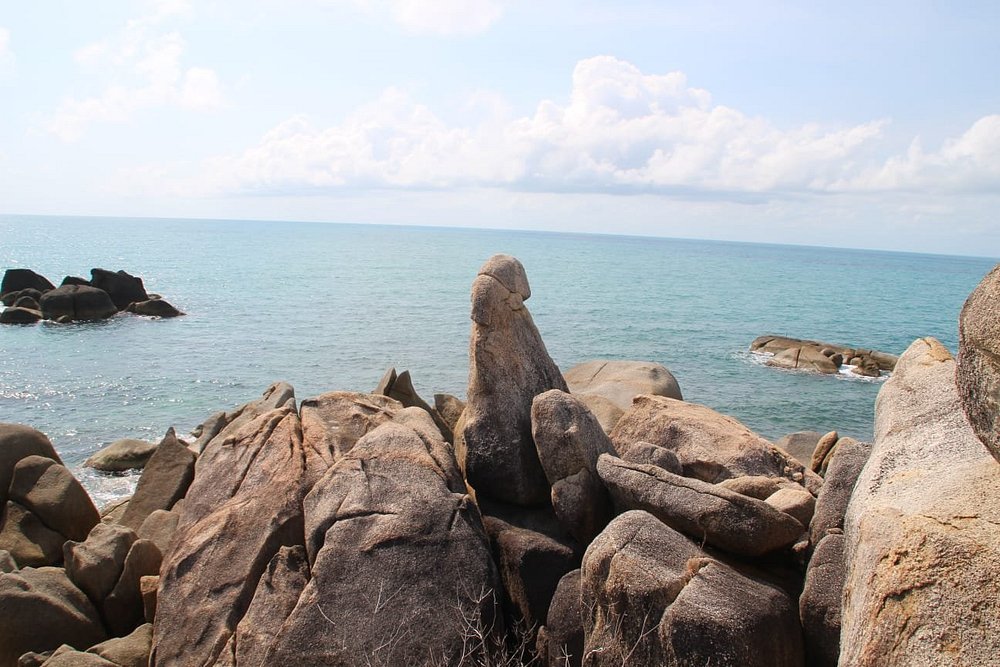
Hin Ta and Hin Yai Rocks are natural rock formations located on the southern coast of Koh Samui, near Lamai Beach. In Thai, “Ta” means “Grandfather” and “Yai” means “Grandmother.” These rocks attract the attention of both locals and tourists due to their unusual shapes resembling human sexual organs. Formed through natural erosion, they are associated with a tragic love story in Thai folklore and are said to symbolize the enduring nature of love. As such, the rocks have become both intriguing natural formations and cultural symbols.
Visitors can take short walks around the rocks, enjoy the sea view, and shop for coconut products or souvenirs at the nearby small shops. The sunset view from this spot is particularly striking. While the area is seen as one of the island’s quirky and fun attractions, it also holds spiritual significance for the Thai people. Hin Ta and Hin Yai Rocks are unique landmarks in Koh Samui, worth seeing for their natural beauty and mythological meaning.
4. Secret Buddha Garden – A peaceful garden filled with statues, located in a mountainous area.
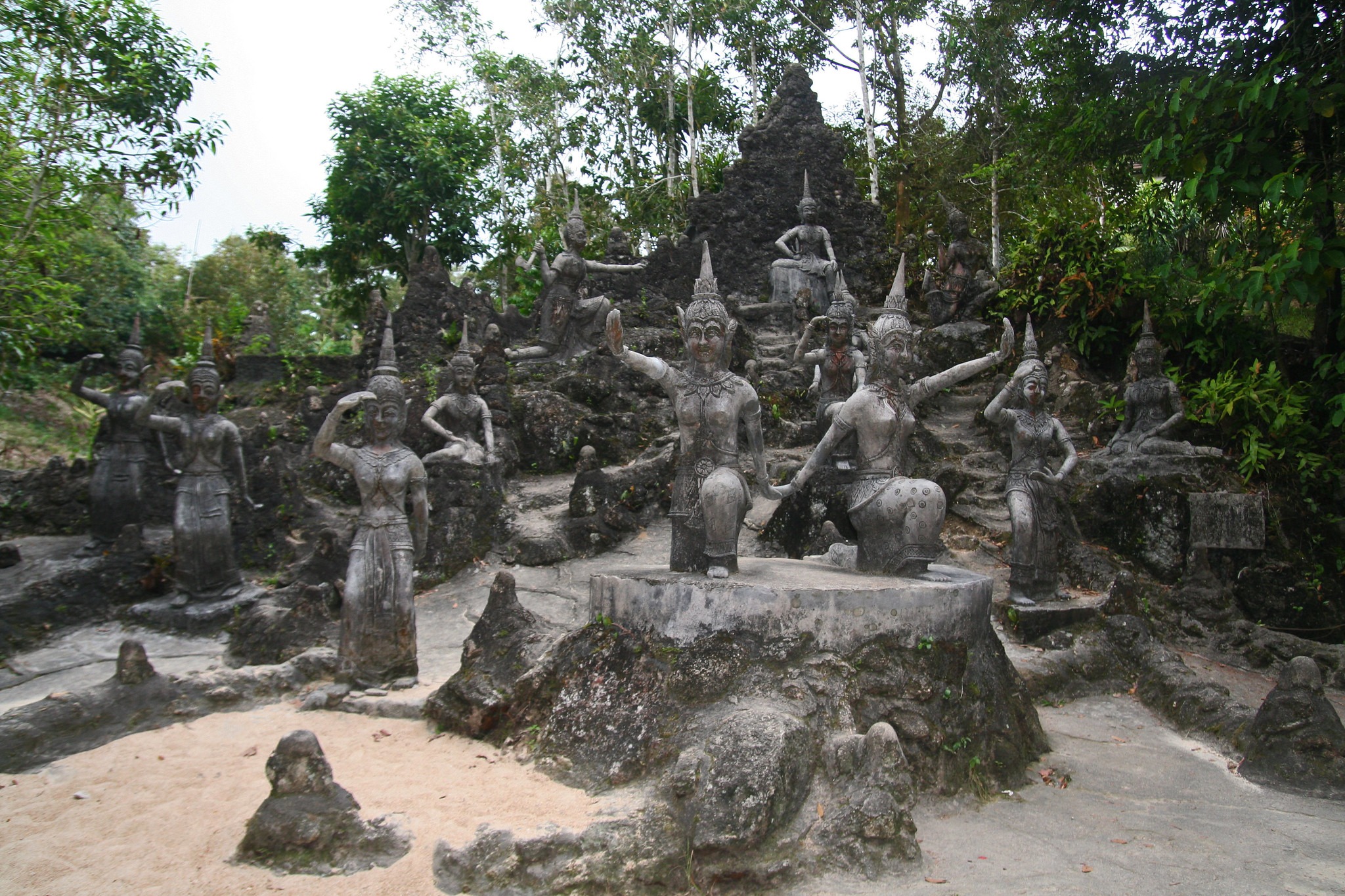
Secret Buddha Garden (also known as Tarnim Magic Garden) is a mystical sculpture park located away from the crowds on the slopes of Pom Mountain (Khun Nim Peak) in Koh Samui. This project was initiated in 1976 by retired tropical fruit farmer Nim Thongsuk at the age of 77 and continued for about 14 years until his death. Today, the garden welcomes visitors with a wide collection of statues—from Buddha figures to mythological creatures, musicians to animal representations—set among cool mountain air, small waterfalls, and shaded trails. Visitors can walk along peaceful paths, find tranquility among the sculptures, imagine the stories behind the figures, and enjoy a unique panoramic view of the island’s interior.
Although not an official temple, this special place offers an artistic and spiritual atmosphere infused with Thai Buddhism. People can pray and meditate here, rest at spots by the water, and connect with the surrounding nature. The entrance fee is reasonably priced (around 80–100 THB), and access is usually via 4×4 vehicles or group tours due to the steep and uneven road. With its unique statues, quiet paths, and forest-integrated ambiance, Secret Buddha Garden is one of Koh Samui’s hidden spiritual and artistic treasures.
5. Na Muang Waterfalls – A beautiful two-tiered waterfall in the forest, also featuring a swimming area.
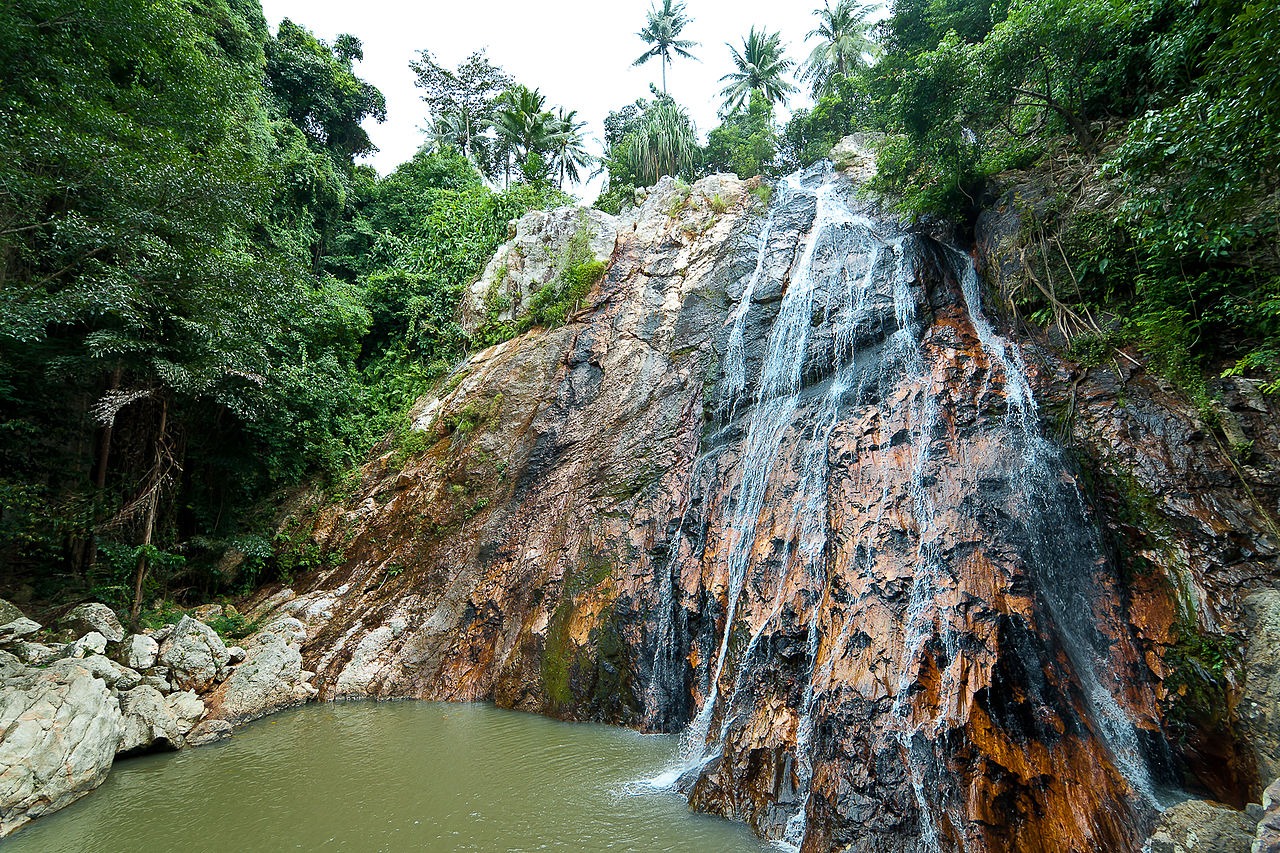
Na Muang Waterfalls are a lush natural wonder located in the heart of Koh Samui. The area features two main waterfalls: “Na Muang 1” and the taller “Na Muang 2.” The first waterfall drops from a height of about 18 meters, and the large natural pool below provides an ideal spot for swimming, especially on hot days. Popular among families and nature lovers, Na Muang 1 is easily accessible and is also notable for its unique purple-reddish rock formations, earning it the nickname “purple waterfall.”
For those seeking more adventure, Na Muang 2 can be reached via a short walk surrounded by forest. This waterfall, about 80 meters high, offers an impressive view with its cascading waters and natural pools formed below. The trek usually takes 20–30 minutes and involves walking along steep and slippery trails. Both waterfalls are excellent alternatives for those wanting to connect with nature, cool off, and experience something beyond the island’s coastal attractions.
6. Chaweng Beach – The most popular and lively beach in Koh Samui.
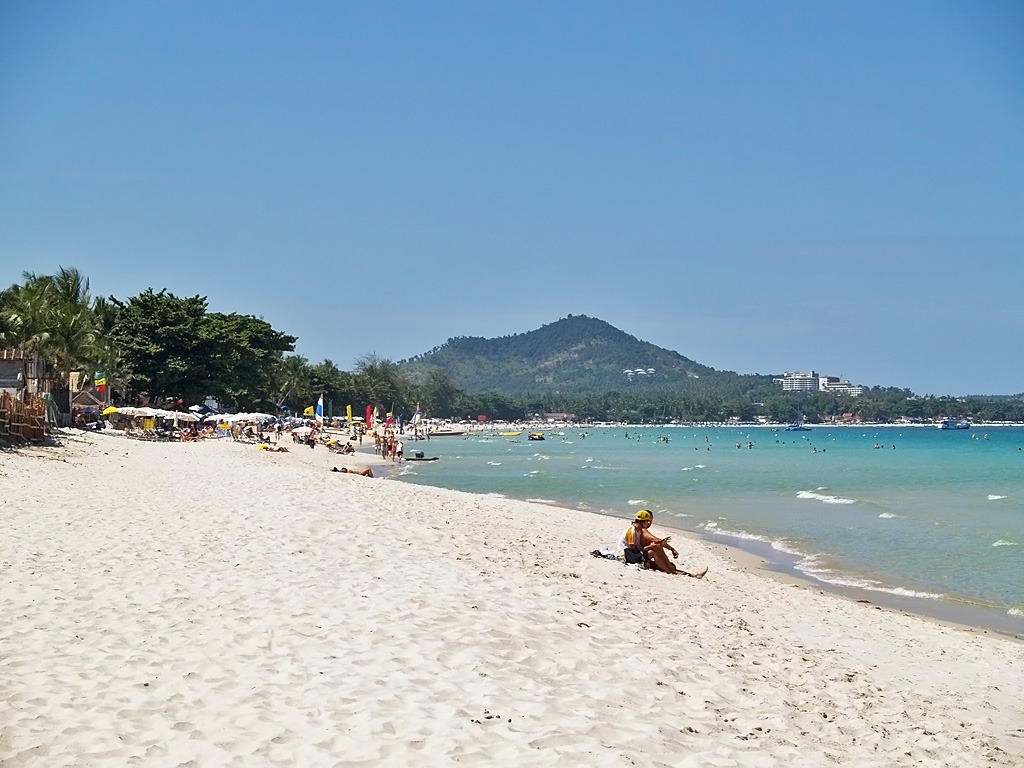
Chaweng Beach is the most popular and lively coastal strip in Koh Samui. The approximately 7-kilometer-long white sandy beach, with its clear turquoise waters, offers a true tropical paradise. The northern and southern ends of the beach provide a calmer and more peaceful atmosphere, while the central area comes alive with water sports, beach clubs, restaurants, and a vibrant nightlife. During the day, it’s an ideal spot for activities such as swimming, snorkeling, jet skiing, parasailing, and banana boat rides.
When evening falls, Chaweng becomes the entertainment hub of the island. Bars on the beach serve drinks accompanied by live music, fire shows, and club parties that continue until dawn, creating a lively nightlife scene. Along the beach road, rows of spa salons, Thai massage centers, restaurants, and shopping stalls offer excellent options for relaxation, food, and shopping. Appealing to families, energetic young groups, and romantic couples alike, Chaweng Beach is a must-experience destination for anyone visiting Koh Samui.
7. Lamai Beach – A quieter yet still lively beach alternative.
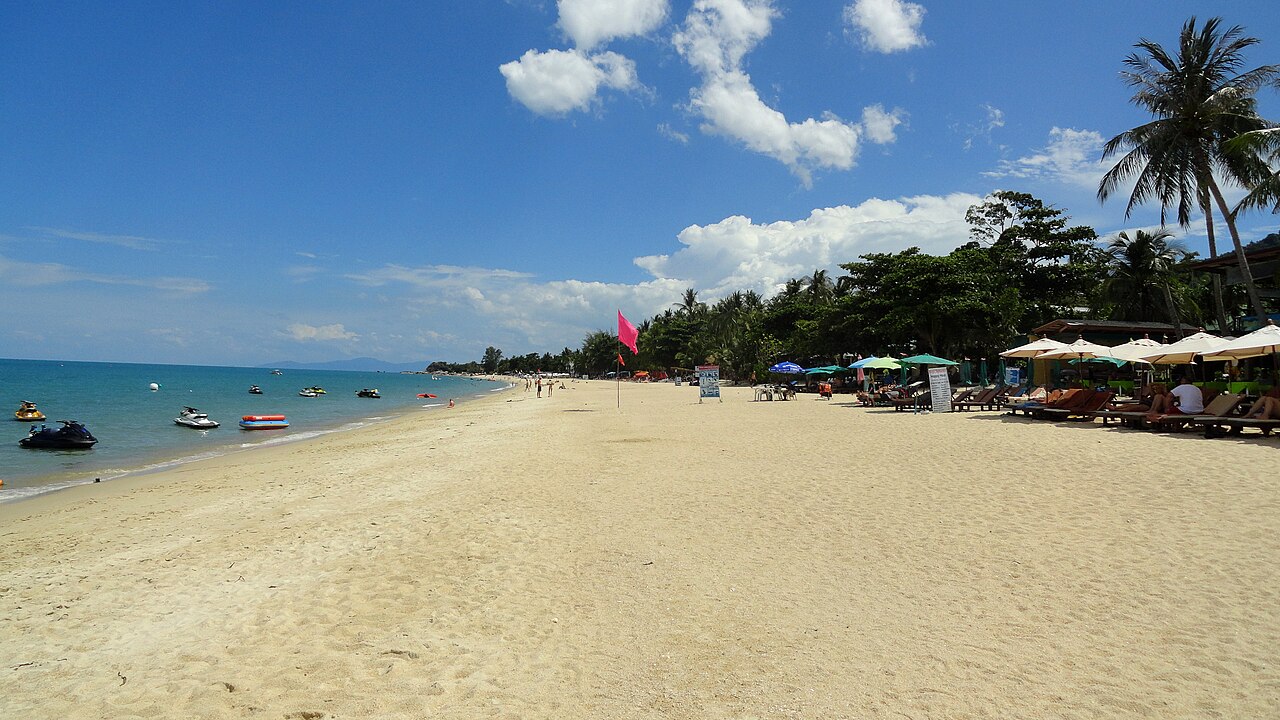
Lamai Beach is one of Koh Samui’s most peaceful and balanced beaches. With its wide golden sands and stunning turquoise sea, it is especially preferred by couples, families, and travelers seeking tranquility. Although it is less crowded than Chaweng, it still offers a perfect setting for swimming, sunbathing, and seaside walks. The central area is surrounded by restaurants, cafes, bars, and spa facilities, creating a pleasant atmosphere for accommodation.
Lamai Beach is also well-equipped for water sports. Activities such as jet skiing, paddleboarding, canoeing, and sometimes windsurfing can be enjoyed, with rental services easily accessible along the shore. At the southern end, the Hin Ta and Hin Yai rock formations (Grandfather and Grandmother Rocks) serve as both cultural landmarks and unique features that add character to the beach. In addition, visitors can enjoy dinner at nearby restaurants during sunset or spend time at the night market along the beach.
8. Bophut Fisherman’s Village – A charming area filled with traditional-style restaurants, cafes, and boutiques.
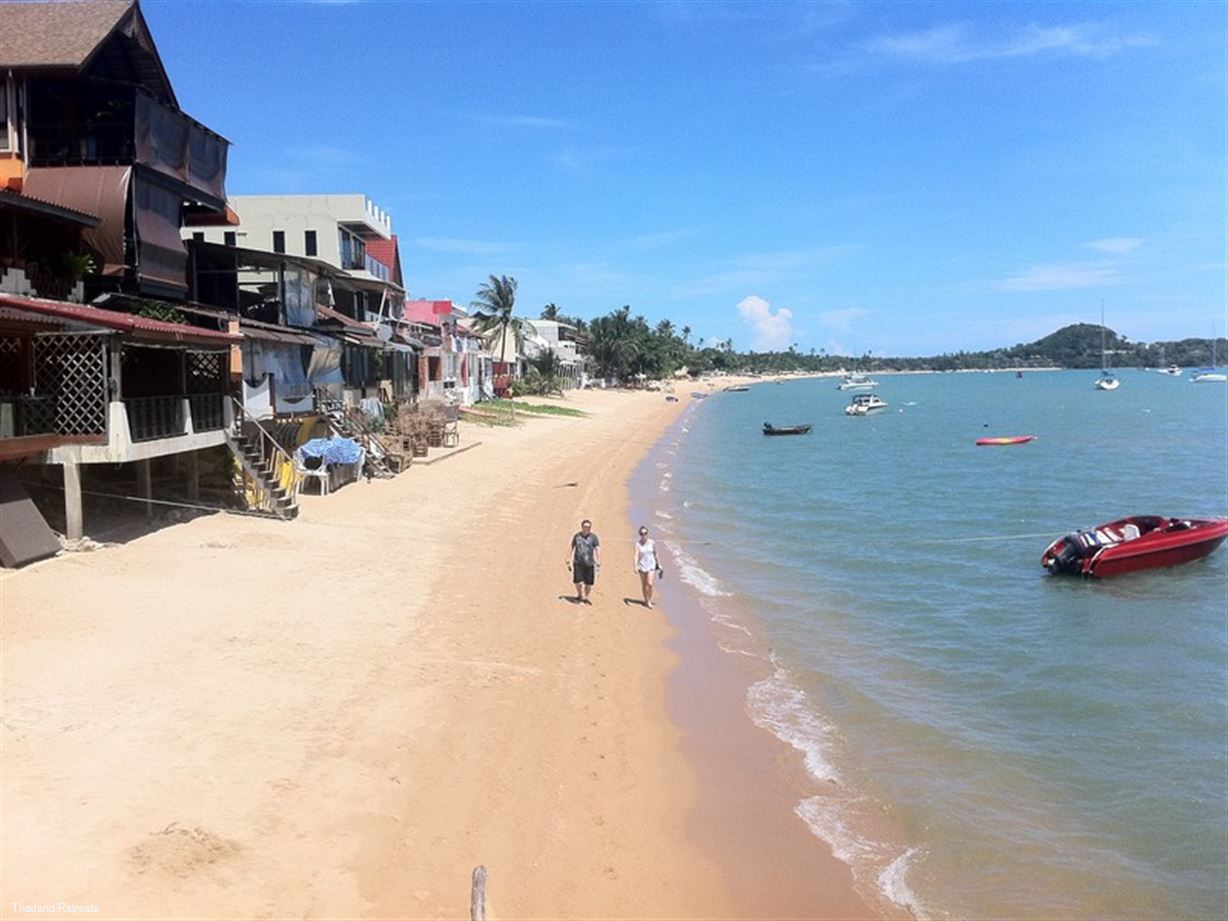
Bophut Fisherman’s Village is a historic fishing village located on the northern coast of Koh Samui. Inhabited by Chinese immigrant fishermen since the 13th century, the area is famous for its original wooden Chinese-style shop-house buildings. Although many of these structures have since been converted into boutique stores, stylish restaurants, and cafes, the village’s unique traditional charm has been largely preserved. During the day, Fisherman’s Village has the calm atmosphere of a seaside town, with its seaside walkways, peaceful beach, and cultural ambiance making it an ideal setting for families, couples, and travelers seeking tranquility.
However, its true charm is revealed during the Friday evening Walking Street night market. During this event, stalls line the beach road offering handmade jewelry, textiles, souvenirs, and Thai delicacies. With street food, live music performances, and a warm local vibe, the market becomes a delightful gathering point for both locals and tourists. Additionally, the area’s restaurants, bars, and spa centers offer pleasant options for romantic dinners and vibrant nightlife. Fisherman’s Village is an unforgettable stop for travelers who want to experience both historical atmosphere and modern social energy.
9. Maenam Beach – A quiet, peaceful beach ideal for long walks.
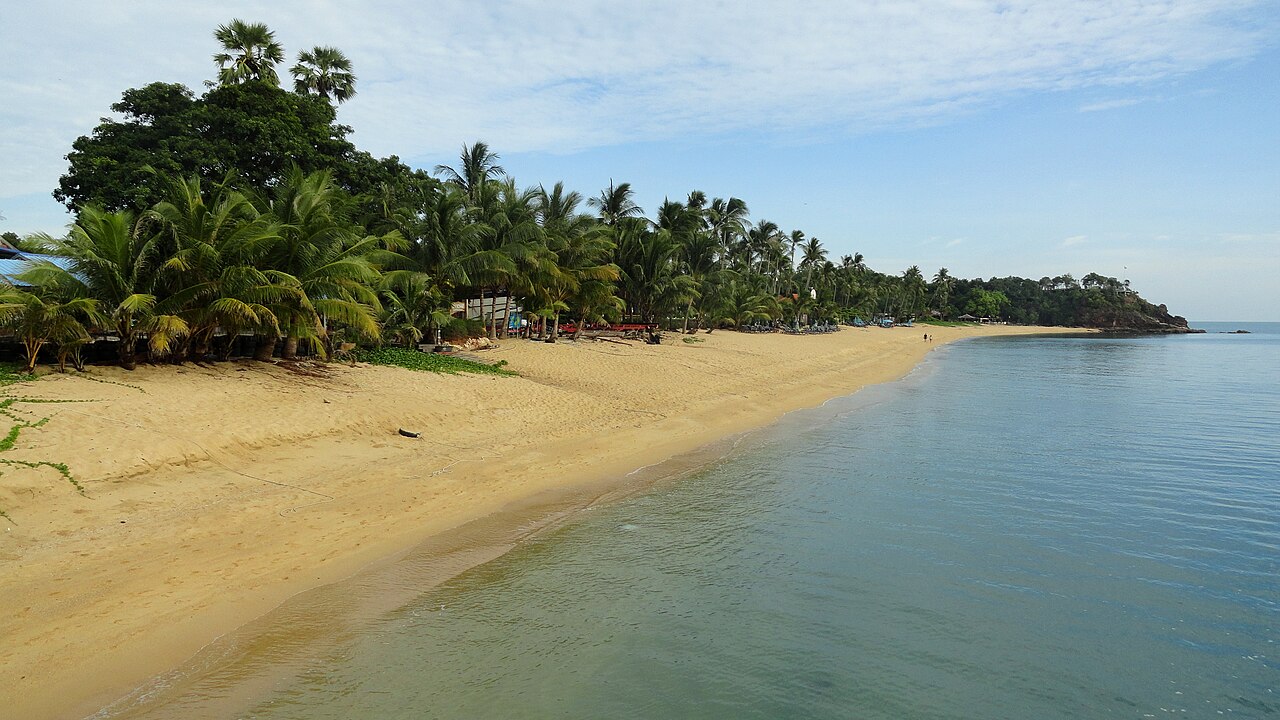
Maenam Beach is located on the northern coast of Koh Samui and offers visitors a peaceful escape with its soft golden sand stretching about 5–7 kilometers and its turquoise sea. Unlike the busy and energetic beaches like Chaweng, Maenam has a calmer and more natural vibe. Surrounded by palm trees, its wide shoreline features shaded resting spots and gently sloping waters, making it an ideal choice for families, couples, or travelers seeking relaxation.
Maenam Beach is not just a beach—it’s an open-air venue filled with water sports, boat tours, and local events. Its quiet atmosphere makes it easy to enjoy activities like jet skiing or canoeing, and it also serves as a starting point for day trips to Koh Phangan and Ang Thong Marine National Park. Every Thursday, the “Maenam Walking Street” night market offers a cultural experience and a fun evening with local street food, handmade products, and a lively atmosphere. This combination of a serene beach experience with cultural richness makes Maenam Beach one of the most special spots in Koh Samui.
10. Lad Koh Viewpoint – A scenic lookout point offering panoramic views of Chaweng and the surrounding area.
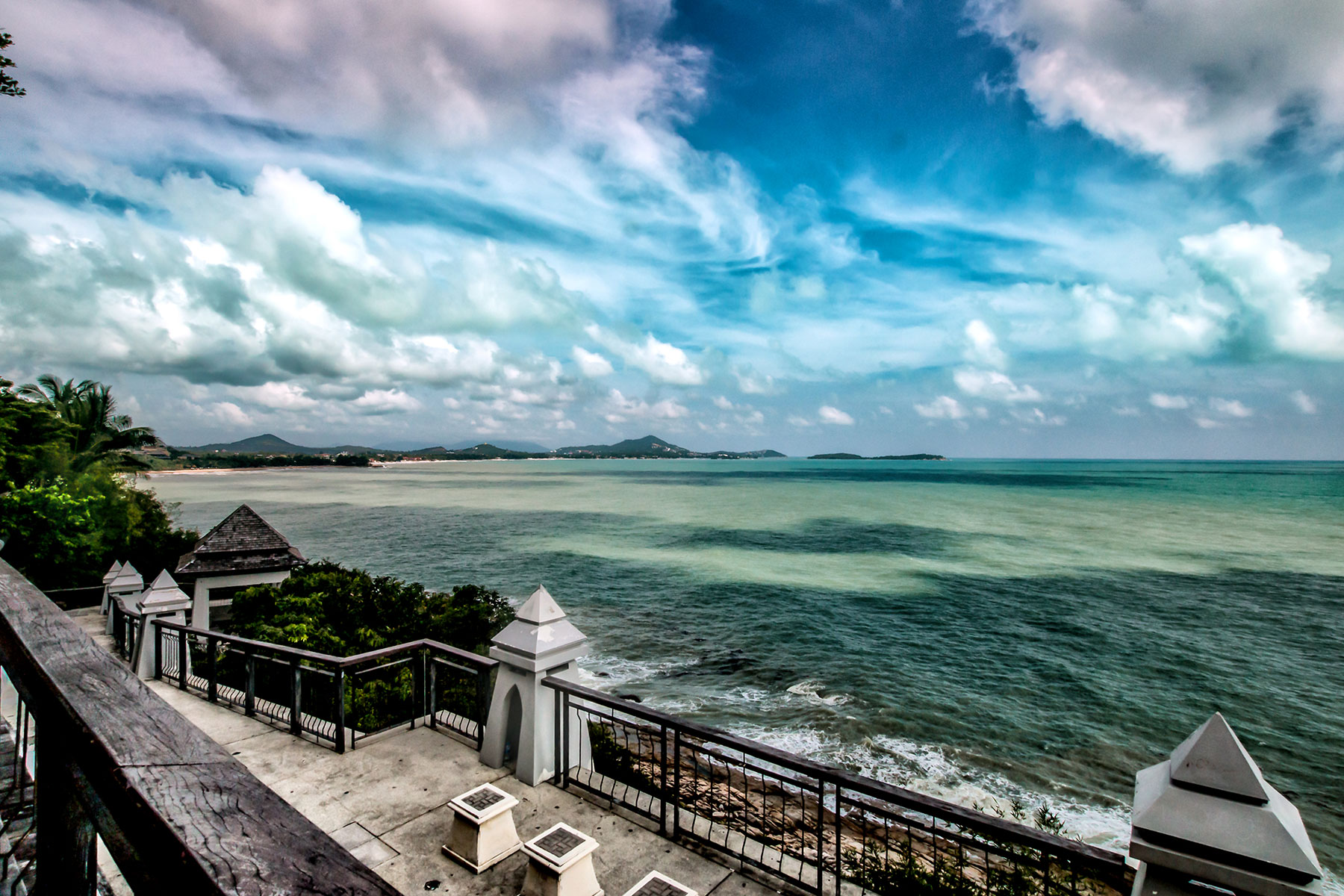
Lad Koh Viewpoint (also known as Zenith Viewpoint) is a favorite stop for photographers and nature lovers, located on a hill along the main ring road between Chaweng and Lamai in Koh Samui. From here, the island’s eastern coastline—especially the curves of Chaweng Beach and the sea—can be clearly seen. Visitors can enjoy the view of the clear turquoise sea and feel the tranquility of nature and the ocean from the elevated pavilion or the rocky platform reached by descending steps.
Reaching Lad Koh is quite easy; it can be accessed quickly by motorbike, car, or group tours. The area is free to enter, open day and night, and offers amenities such as parking, toilets, and small snack stands. Early mornings at sunrise or late afternoons when the light softens are ideal times for capturing stunning photographs. Visitors may also hear the occasional sound of car horns and witness spirit house ceremonies at the small roadside shrine, adding to the mystical atmosphere.
If beautiful landscapes excite you, don’t forget your camera or phone—because Lad Koh Viewpoint offers one of the most impressive panoramas in Koh Samui.
11. Wat Khunaram – A temple that displays a mummified monk who died while meditating.
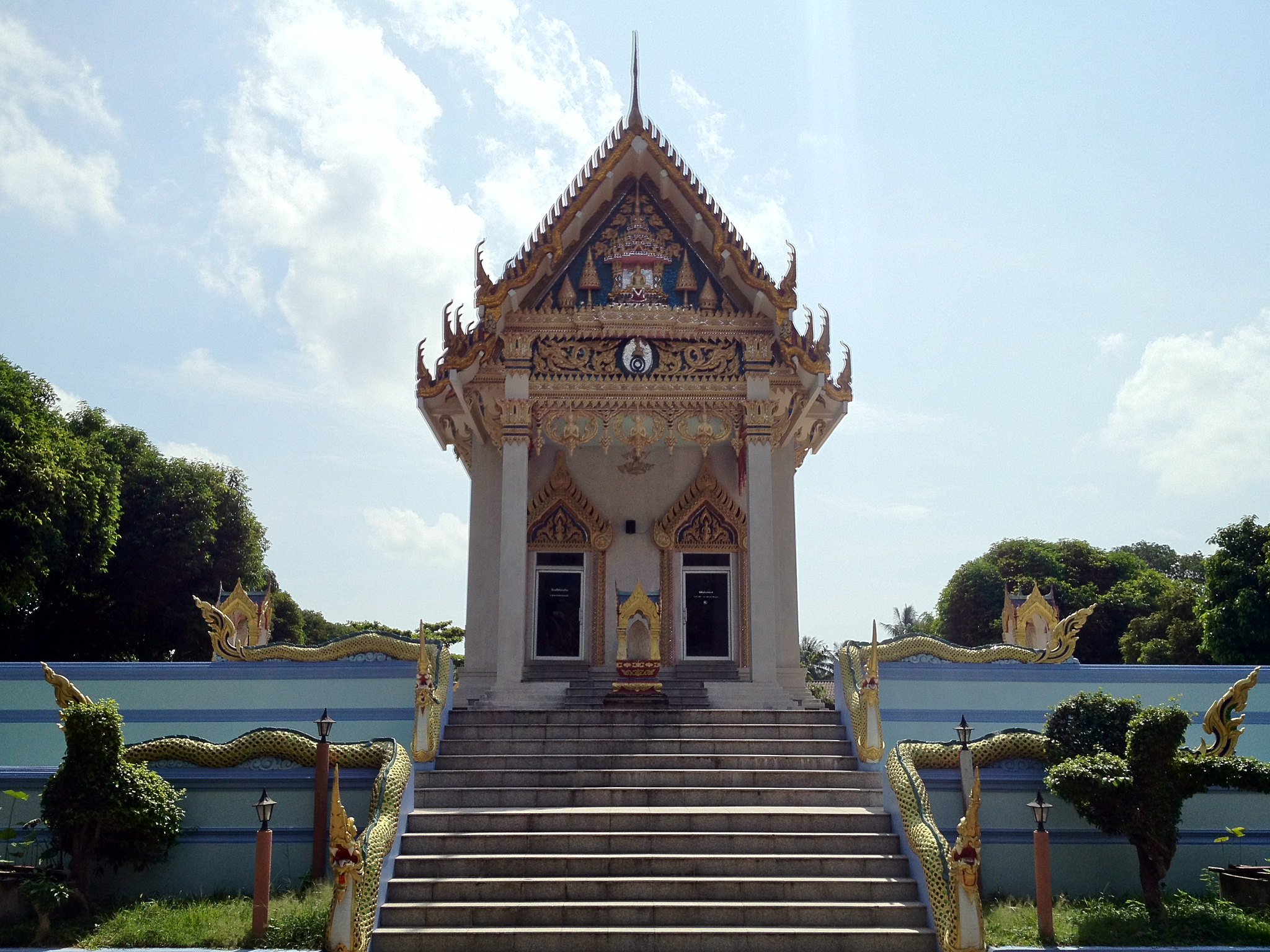
Wat Khunaram is a respected Buddhist temple located along the main ring road between Na Muang and Hua Thanon on Koh Samui. Founded in 1959, the temple offers a peaceful atmosphere away from the island’s busy coastal areas. What makes this temple unique is the mummified body of the monk Luang Pho Daeng, who passed away in a meditative state in 1973. Displayed in a glass casket as a sacred legacy, his body symbolizes the belief that spiritual discipline transcends the temporary physical form, a message shared with both locals and visitors.
Visitors can come during the daytime and explore the area respectfully; the temple is free to enter and accepts voluntary donations. In the modest yet carefully decorated surroundings, one can deeply feel the Buddhist concept of “anicca,” or the impermanence of life. Guests may also engage in personal reflection through traditional Kau Cim fortune sticks available inside the temple. Luang Pho Daeng’s body is displayed with calm dignity, wearing sunglasses that cover his eyes—a reminder of the inner serenity he continued to teach even in death.
Wat Khunaram offers tourists not only a visible experience but also a chance for inner awareness, reflection on mortality, and Buddhist teachings. The temple’s small but meaningful courtyard serves as a spiritual stop for anyone seeking inner peace. As long as visitors respect the dress code and behavior guidelines—such as covering shoulders and knees and speaking softly—it stands as one of Koh Samui’s most culturally and spiritually significant sites.
12. Ang Thong Marine National Park – A protected natural park of 42 islands accessible by boat off the coast of Koh Samui.
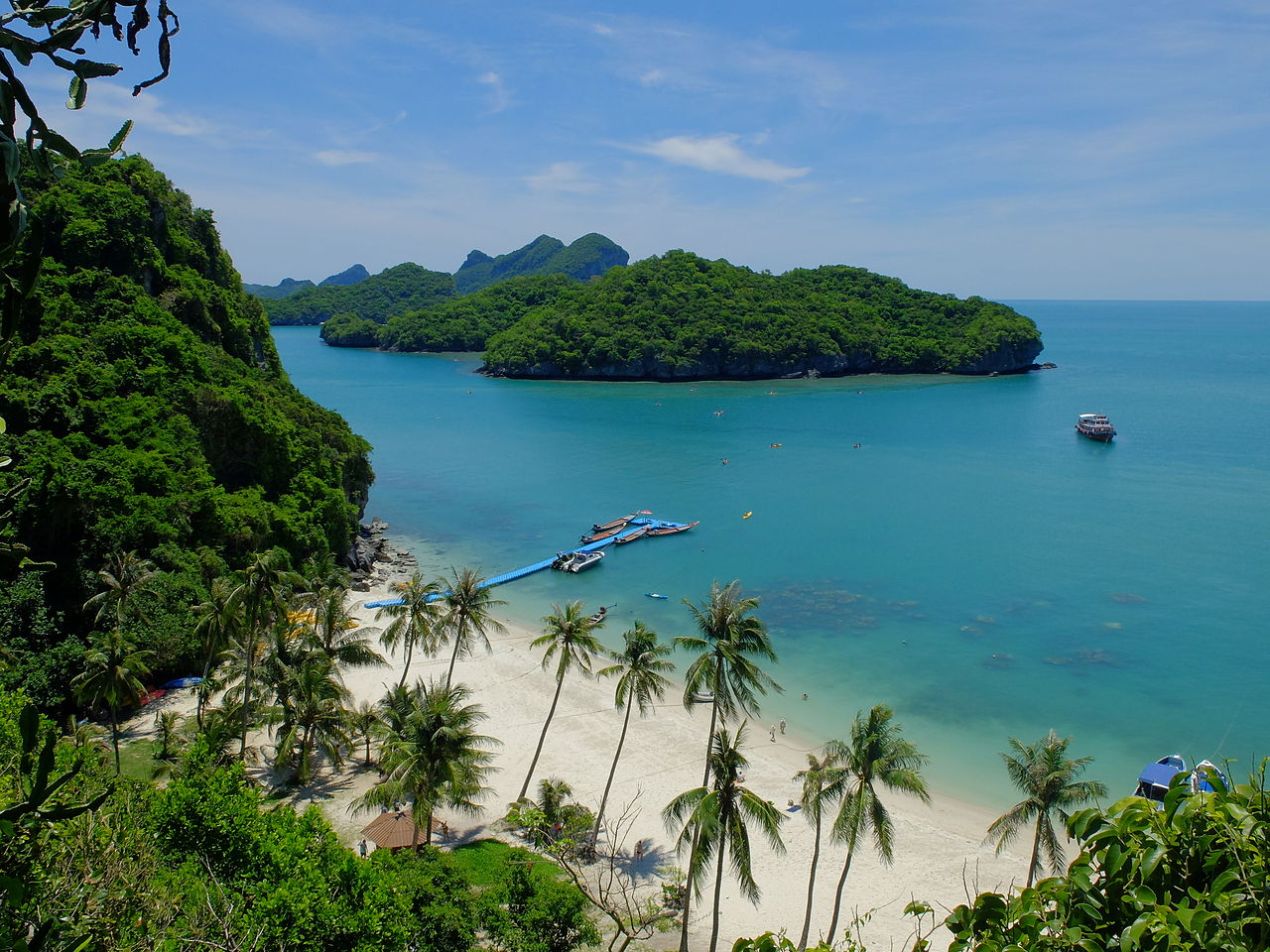
Ang Thong Marine National Park is a protected marine park located about 35 km west of Koh Samui. Comprising 42 idyllic islands, the area was designated a national park in 1980 and recorded as a wetland of international importance under the Ramsar Convention in 2002. With untouched limestone cliffs, caves, hidden lagoons, and ancient rainforests, it offers breathtaking landscapes for nature lovers. The name Ang Thong, meaning “Golden Bowl,” symbolizes the park’s natural richness. Of the approximately 102 km² total area, 18 km² consists of land, with limited habitation and facilities found only on a few islands, such as Ko Wua Ta Lap and Ko Phaluai.
Ang Thong is rich in opportunities for both nature exploration and outdoor activities. Guided boat tours include snorkeling to discover marine life, kayaking between islands, hiking along cliffs, and panoramic viewpoints from high altitudes. For example, the famous “Emerald Lake” (Talay Nai) on Ko Mae Ko and the 500-meter-high viewpoint on Ko Wua Ta Lap are favorite stops for photographers. The park also stands out with its ecological diversity, including sea turtles, mangrove forests navigated through narrow channels, and rich wildlife. These day trips from Koh Samui offer travelers both adventure and a peaceful escape.
13. Koh Tao and Koh Nang Yuan – Neighboring islands reached by day-trip boat tours, ideal for snorkeling and diving.
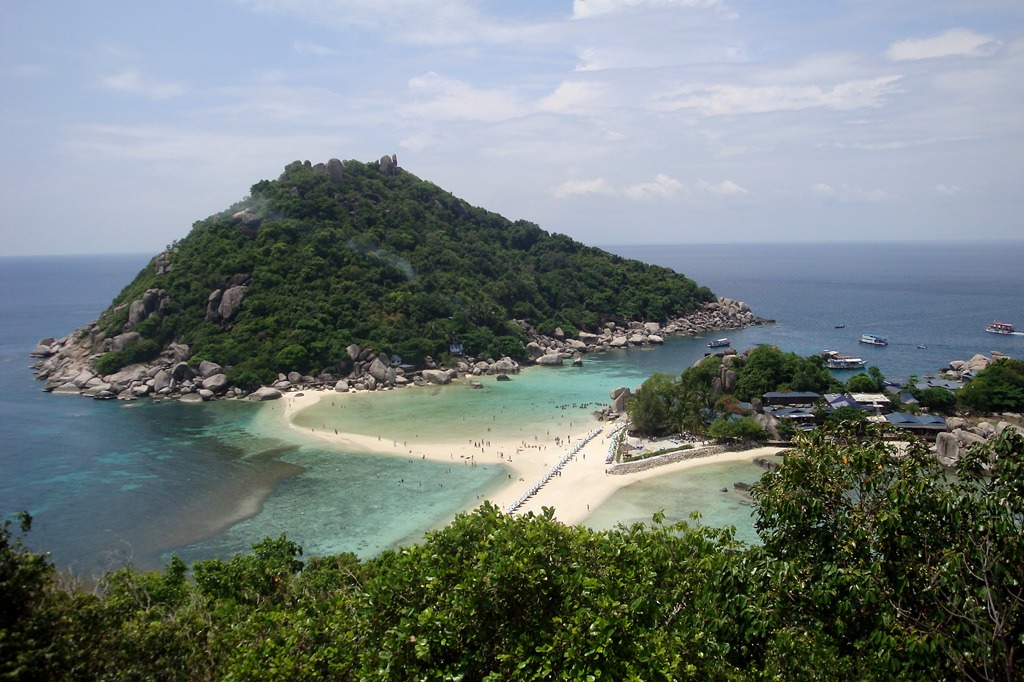
Koh Tao, also known as the “Turtle Island,” is a captivating island located northwest of Koh Samui and is especially renowned as a paradise for diving enthusiasts. With its small size yet rich marine life, clear waters, and affordable diving courses, it has become a favorite among divers of all levels, from beginners to professionals. The island also offers various activities such as rock climbing, nature hikes, and enjoying sunsets from bungalows, but its main attraction is undoubtedly the snorkeling and diving routes around it.
Located nearby, Koh Nang Yuan is situated right next to Koh Tao and is famous for its postcard-perfect view created by three small islets connected by a sandbar. Visitors reach the island through day-trip boat tours from Koh Samui; the typical itinerary includes snorkeling around Koh Tao followed by a short hike on Koh Nang Yuan to a scenic viewpoint and then snorkeling in its crystal-clear waters to observe colorful marine life. Due to conservation measures against erosion, the number of visitors is limited during peak seasons, allowing for a relatively peaceful and serene experience.
With coral reefs suitable for diving and the opportunity to observe marine species such as clownfish and vibrant parrotfish, these two islands are highly recommended for those seeking an unforgettable underwater and island adventure beyond the typical beach experience of Koh Samui.
14. Samui Elephant Sanctuary – A sanctuary where you can closely observe elephants cared for under ethical conditions.
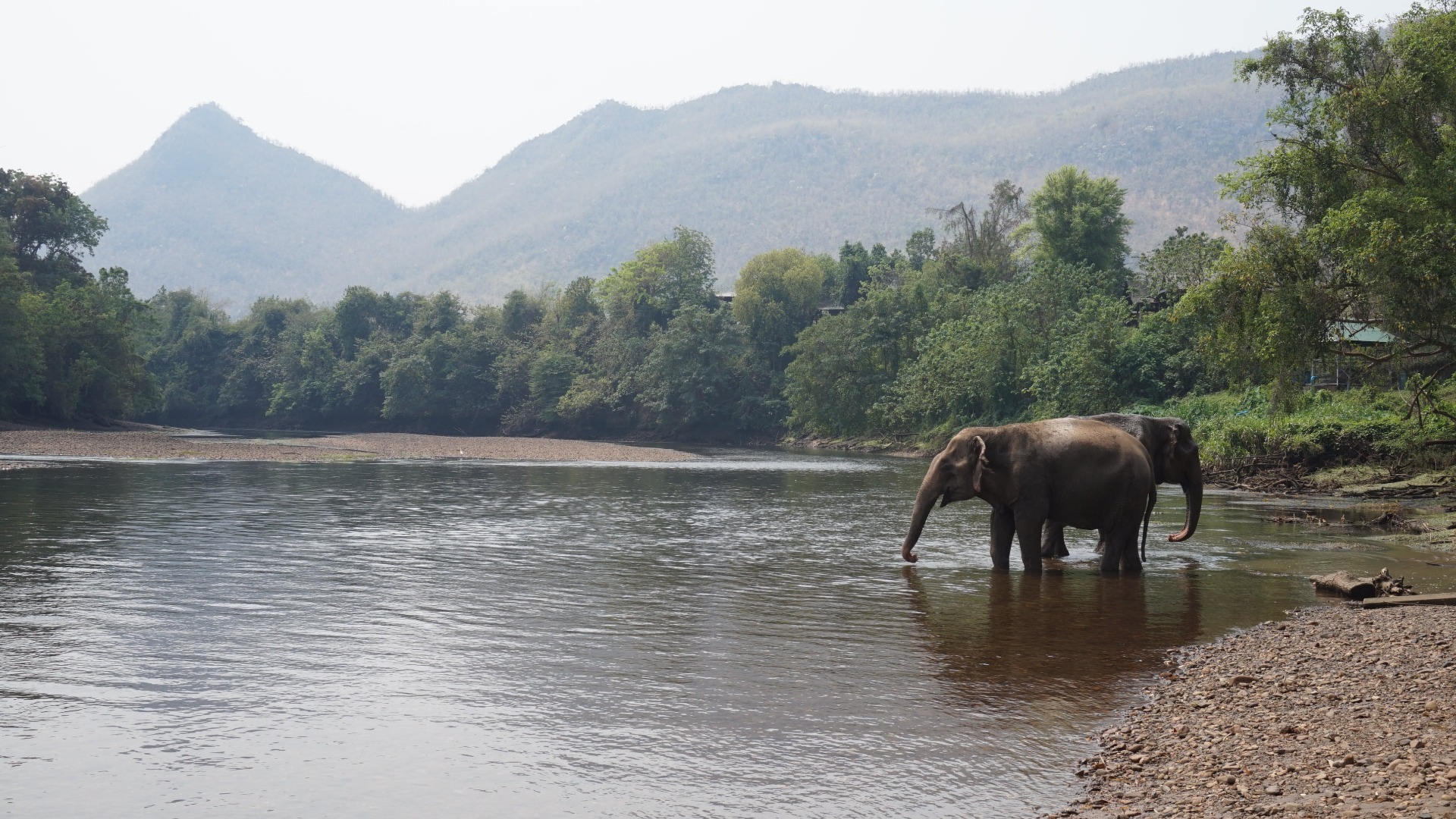
Samui Elephant Sanctuary (also known as Samui Elephant Haven) is a pioneering establishment on Koh Samui that serves as an ethical refuge for elephants. Opened in Bophut in 2018, the facility later expanded with a second location in Chaweng Noi. Elephants rescued from forced labor, performance shows, or tourist exploitation are brought here to roam freely, bathe in mud, and socialize in their natural habitat. The center adopts a “Saddle Off” model, completely rejecting elephant rides, performance acts, and forced bathing rituals.
Visitors, accompanied by guides, can offer fruits and bananas to the elephants in designated feeding areas and observe their natural behaviors from a platform. Morning or afternoon programs are conducted in small groups and include educational presentations, elephant care activities, feeding, and forest walks. Platforms like TripAdvisor feature high ratings and reviews describing the sanctuary as having “high ethical standards and excellently cared-for elephants.”
Endorsed by the community, media organizations, and World Animal Protection, this approach provides visitors with both an emotional and educational experience. Many describe it as “one of the most authentic and ethical animal experiences” they’ve ever had. Additionally, the income generated from these programs directly supports elephant care, nutrition, veterinary services, and environmental conservation—allowing visitors to contribute meaningfully. Samui Elephant Sanctuary stands out as the most ethical and peaceful way to experience wildlife during a visit to Koh Samui.
15. Coral Cove Beach – A small and quiet cove popular for snorkeling and rock climbing.

Coral Cove Beach stands out as a hidden paradise among Koh Samui’s popular beaches. Located between Chaweng and Lamai, this small cove features around 200 meters of golden sand, red granite boulders, and clear turquoise water. The rocks on either side of the cove create a sheltered natural environment, and the shallow, calm waters are especially suitable for swimming, snorkeling, and paddleboarding.
Coral Cove offers a peaceful atmosphere compared to the island’s busier beaches, making it ideal for travelers seeking relaxation, sunbathing, or underwater exploration. A few boutique establishments near the shore provide dining options, and rental sunbeds and umbrellas ensure comfort. The cove is rich in colorful coral reefs and fish species accessible by snorkeling, making it attractive for amateur divers as well. For nature lovers, short walking trails around the area allow for both a tranquil retreat and a light adventure experience.
16. Overlapping Stone (Hin Lad) – A trekking route known for its striking rock formation with stacked stones.
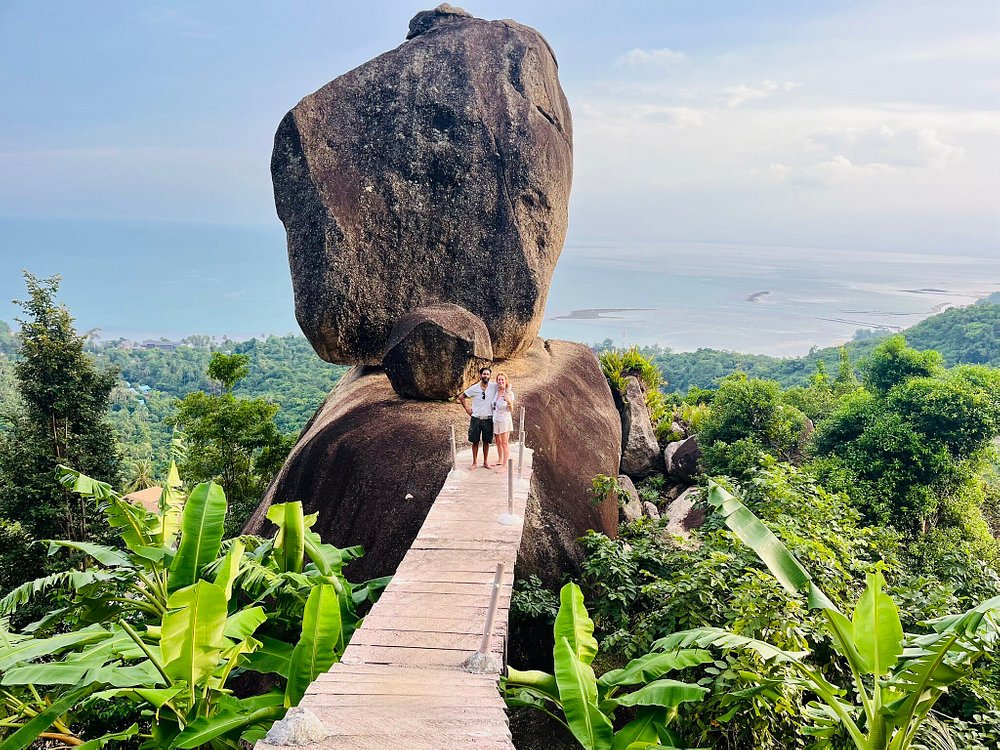
Overlapping Stone (Hin Lad), locally known as “Overlap Stone” or “Hin Son,” is one of Koh Samui’s hidden natural wonders. Situated at an altitude of around 150 meters, this unique viewpoint features two large round stones that appear miraculously stacked atop one another by nature. Visitors reach the formation via a walkway built onto the lower rock and are treated to both the impressive stone structure and a stunning view of Lamai Bay behind it.
Reaching the site requires a bit of adventure: from Lamai, you drive or ride a scooter up the hills, followed by a short but rugged 500-meter hike. There is a small paid parking area and an entrance fee (around 20–50 THB). Visiting at dawn or sunset provides a more peaceful atmosphere, enhancing the site’s mystical feel away from crowds. Those with a fear of heights should be cautious, as the narrow bridge is elevated and can be thrilling to cross.
17. Wat Ratchathammaram (Red Temple) – An impressive Buddhist temple made of red sandstone.
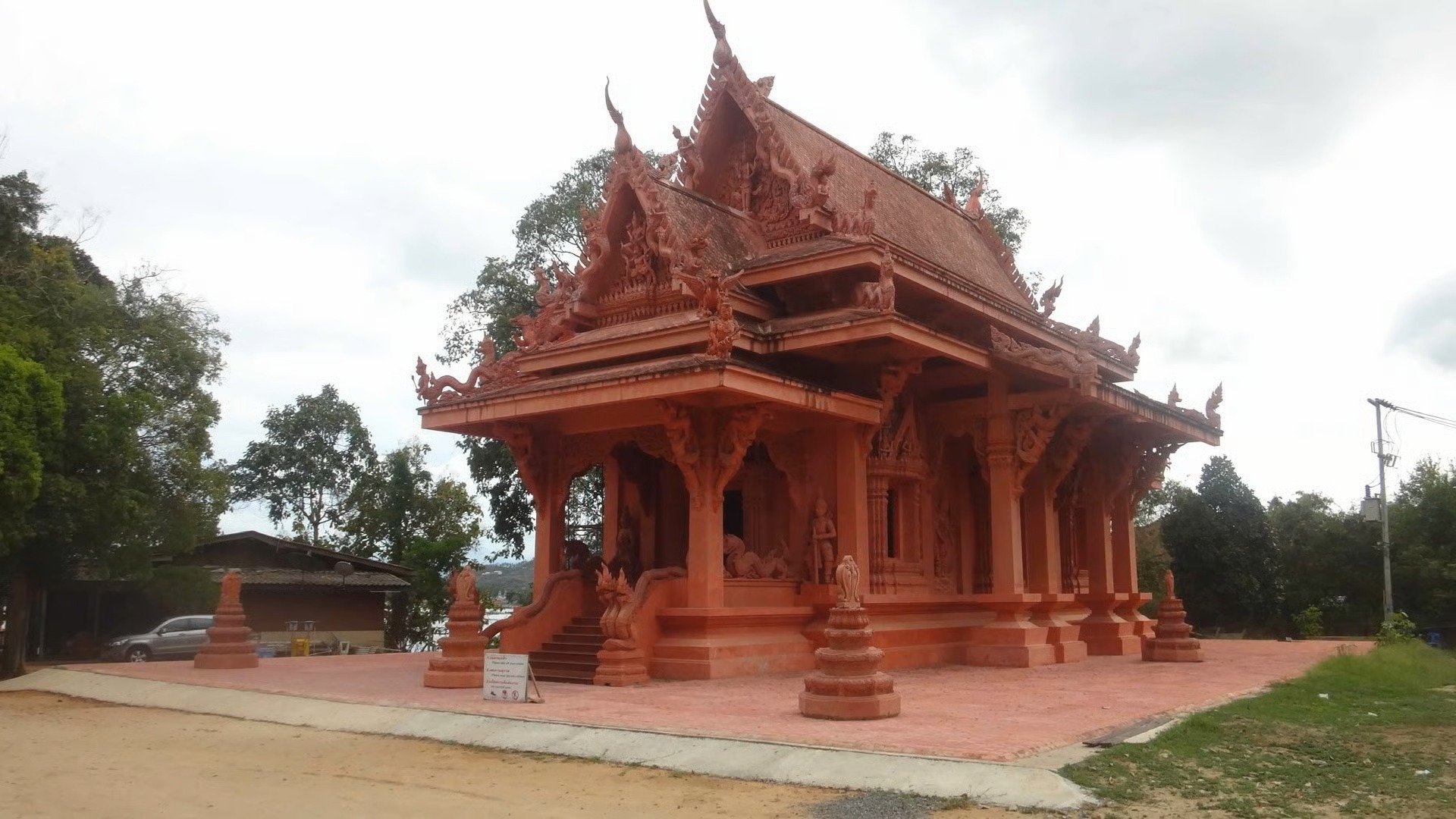
Wat Ratchathammaram, locally known as Wat Sila Ngu or the “Red Temple,” is a striking Buddhist temple located near Lamai on Koh Samui. Unlike temples adorned with gold, this structure is entirely built from red breccia stone, creating a mystical atmosphere with its exterior and intricately carved interior walls. The temple’s walls depict scenes from the life of Buddha, naga (mythical serpents), dragons, and figures like Hanuman—offering visitors a chance to explore the symbolic richness and fine details of Thai Buddhist art.
The Red Temple stands out not only for its aesthetics but also for providing a peaceful spiritual experience. A staircase beneath the temple leads toward the sea, flanked by naga statues, combining architectural depth with a coastal view. When visited in the early morning or around sunset, the temple offers a quieter and more photogenic setting—at those times, the red stone, golden pagoda, and ocean blend beautifully in the soft light. Entry is free, and the site is an unforgettable cultural stop for travelers who respect modest dress and proper behavior.
18. Samui Canopy Adventures – Ziplining and adrenaline-filled activities through the jungle.
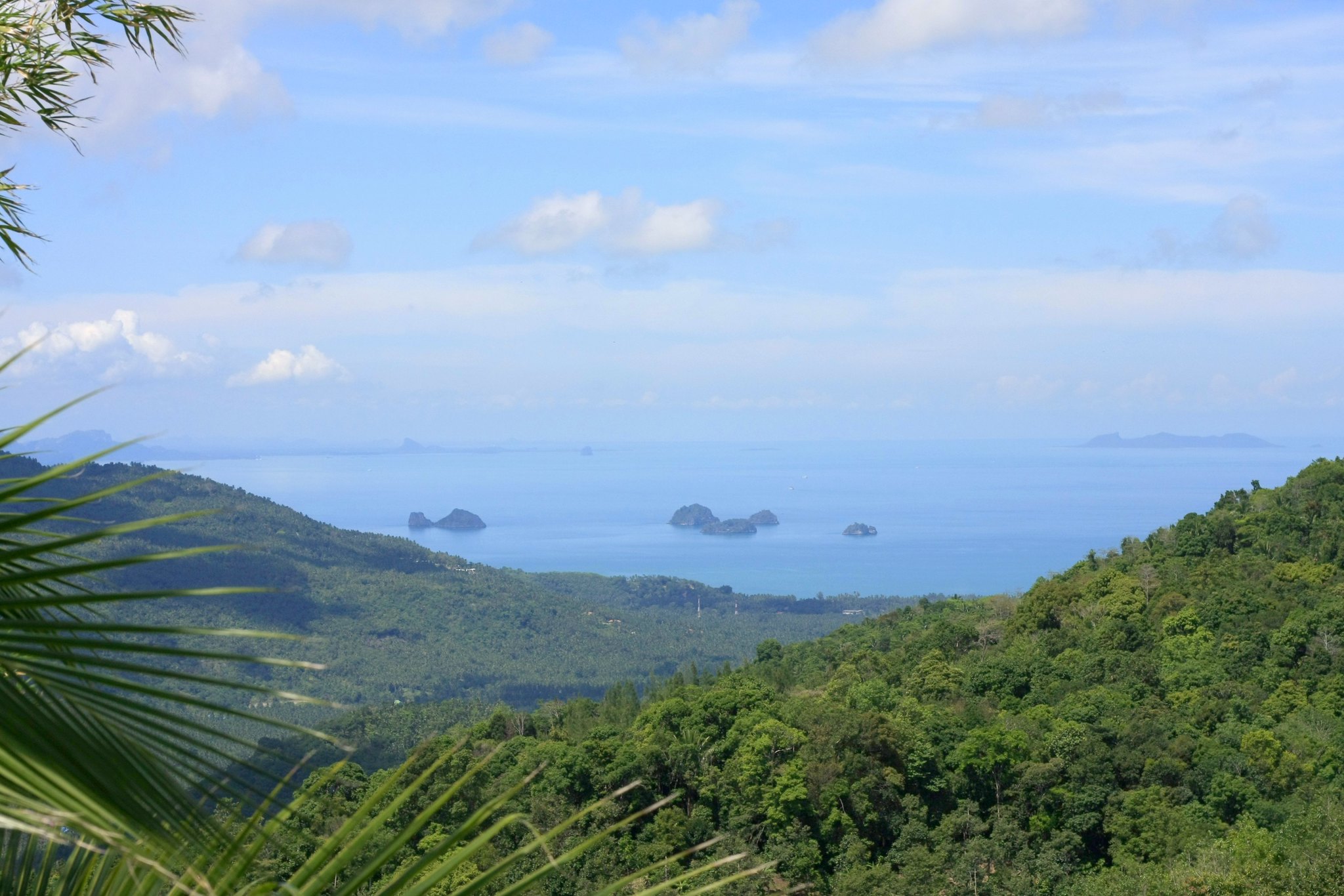
Samui Canopy Adventures (also known as Zipline Canopy Adventures) is an unforgettable jungle experience located in the Maenam area of Koh Samui. Featuring a course with 6–8 different platforms and zip lines, it offers visitors breathtaking panoramic views from the treetops of the tropical forest. Gliding through high wires at speeds reaching up to 50 mph (≈ 80 km/h) provides both an adrenaline rush and a peaceful connection with nature. Tours typically last around two hours and include rest stops at hidden waterfalls with cave pools, photo opportunities, and complimentary refreshments.
Safety is prioritized at every stage: participants receive thorough safety briefings from guides and are equipped with high-quality gear. Free transportation is provided from areas such as Maenam, Bophut, and Chaweng, while an extra fee may apply for transfers from more distant locations like Lamai. The experience is highly rated on platforms like TripAdvisor and Viator, with reviews mentioning “extremely friendly staff” and “amazing views.” It is suitable for families or adventure-seeking groups of friends and has an age range of 9–60 years, with a maximum weight limit of 120 kg.
This adventure, featuring fast zip lines, suspension bridges in the forest, safety training, and waterfall breaks, is a fun, safe, and nature-connected adrenaline tour. Even during midday, reservations may be required—so it’s recommended to book in advance when planning your visit.
19. Samui Cultural Center and Fine Art of Southeast Asia – A private collection featuring Thai culture, sculptures, and religious artifacts.
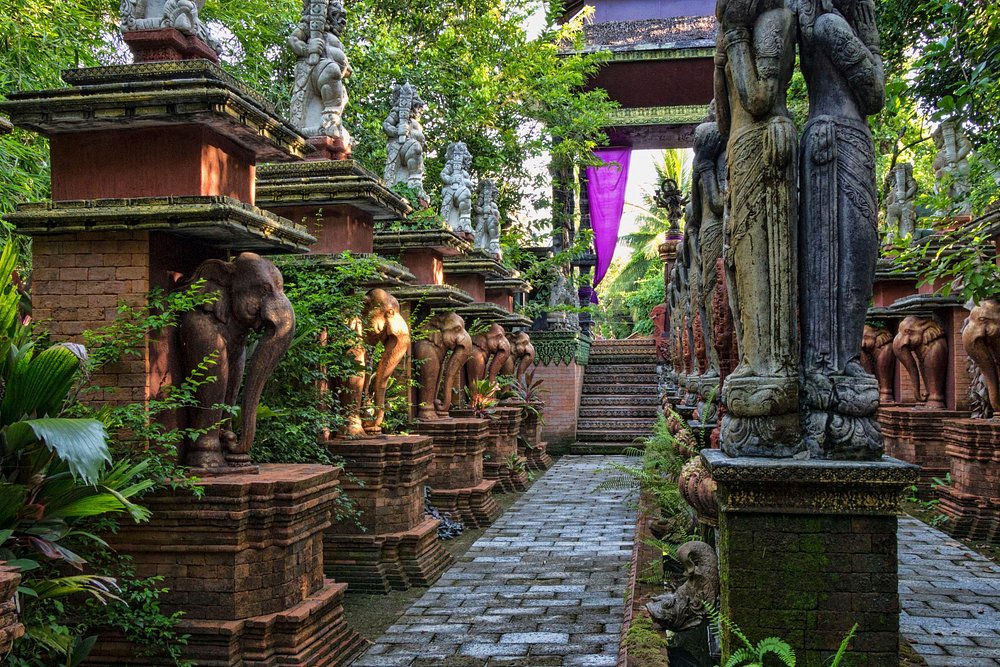
Samui Cultural Center and Fine Art of Southeast Asia, also known as Dusit Dhewa, is a unique art and cultural center located in the Lipa Noi area of Koh Samui. Founded by Khun Chart, the center showcases the cultural mosaic of Southeast Asia through handmade sculptures, ornaments, and artworks from Thailand, Indonesia, Myanmar, and Laos. As you walk along the paths surrounded by tropical gardens, you can admire intricate sculptures depicting scenes from Hindu-Buddhist mythology, such as the “Churning of the Ocean,” and encounter figures inspired by various regions.
Visitors can join interactive guided tours to learn the cultural and religious meanings behind the artworks and delve into the depths of art through Khun Chart’s personal commentary. The experience is enriched with handicraft workshops, traditional Thai dance performances, musical shows, and Thai massage sessions. With an entrance fee of 120 THB, the center offers an inspiring exploration of art, culture, and education in a peaceful natural setting, often described as a hidden cultural treasure that evokes an “Indiana Jones atmosphere.” Open until the afternoon, it is an ideal choice for a tranquil and immersive artistic visit surrounded by nature.
20. Night Markets (Chaweng, Bophut, Lamai) – Evening markets filled with street food, souvenirs, and a lively atmosphere.
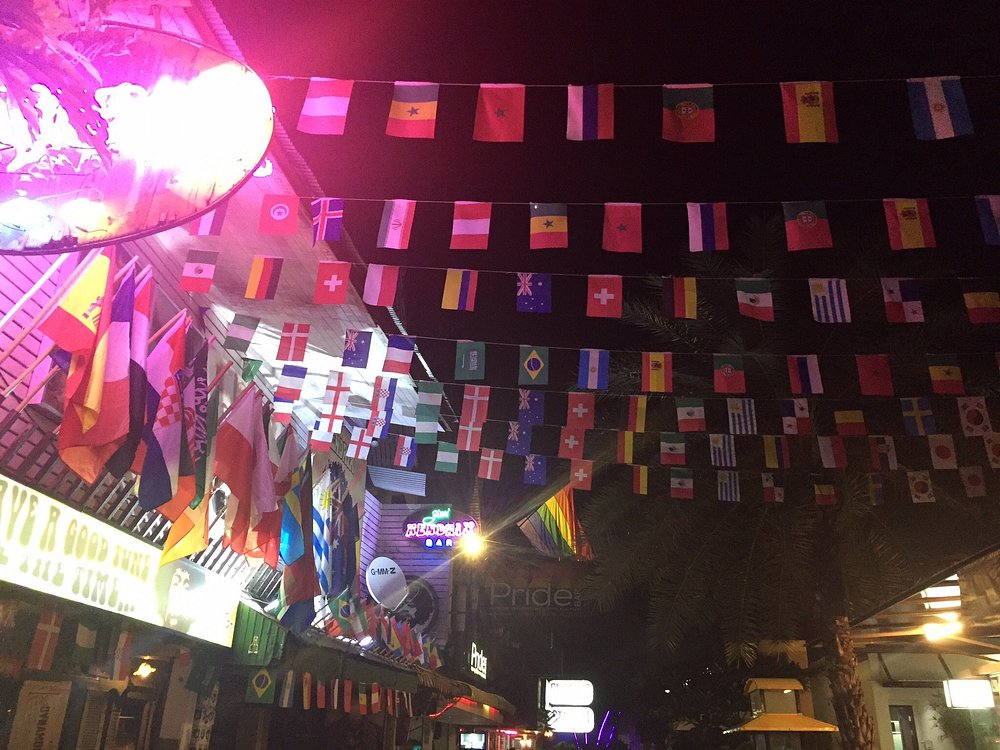
Koh Samui’s night market experience offers a unique richness that reflects the island’s cultural fabric, distinctive flavors, and vibrant social atmosphere.
First, Chaweng Night Market is a large open-air food market located by Chaweng Lake, open daily from 5:00 PM to 11:00 PM. It brings together the flavors of Thai cuisine (Pad Thai, Mango Sticky Rice, seafood) and international dishes. The seating areas between the food stalls are comfortable and family-friendly, making it a popular spot thanks to its lively street atmosphere and convenient location.
Bophut Fisherman’s Village Night Market is held on specific days of the week (typically Monday, Wednesday, and Friday) between 5:00 PM and 11:00 PM. Colorful stalls line the seafront, offering handmade souvenirs, textiles, and hot street food. With a sea view, live music, a friendly village atmosphere, and performances by local artists, it promises an unforgettable experience.
Lamai Night Market is set up near Lamai Beach, especially on Sunday evenings from 5:00 PM to 11:00 PM. With a relatively calmer and more local vibe, the market provides a natural social setting filled with Thai food, live music performances, and handcrafted souvenirs.
